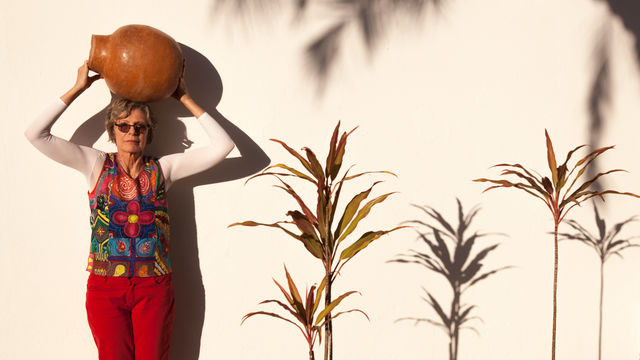
Liliane Dardot
Born in Belo Horizonte, Brazil, in 1946, Liliane Dardot studied drawing at the Escola de Belas Artes, Universidade Federal de Minas Gerais, in Belo Horizonte, graduating in 1968. The following year she became a professor of drawing at that institution, a position she held until 1977. At the beginning of her career Dardot was preoccupied with social and political questions during the harshest years of the military dictatorship in Brazil. During the 1960s and 1970s she was involved with socially concerned projects, working with juveniles and with the impoverished population of Santana Island on the Amazon River. Drawing has continued to be a fundamental technique throughout her career, and she created numerous works as a graphic artist and illustrator. In 1977 she moved to the northeastern city of Olinda, where she spent twelve intense years of professional formation as an artist outside the university orbit. There she became a member of the Oficina Guaianases, an association of printmakers. She began producing lithographs and acted as treasurer, art and technical director, and president of the association while participating in numerous exhibitions that it organized. In addition to lithographs, the artist produced drawings in colored pencil as well as book illustrations. Her earlier emphasis on the human figure gave way to explorations of inanimate objects, plants, and animals. After she moved to Olinda, the denunciatory tone of her earlier drawings gave way to images describing her experiences as a mother and housewife, focusing on the ritualistic relevance of everyday chores.
Back in Belo Horizonte in 1989, Dardot continued with her graphic production but began to dedicate more time to painting. Between 1990 and 1997 she taught lithography at the Escola Guignard in Belo Horizonte. During the same period she started work on a series of notebooks with drawings of nature. In the 2000s she created large-scale drawings and writings using colored sand. She also became involved with the work of the Brazilian writer João Guimarães Rosa (1908–1967) and produced pieces that responded to his writings, such as the public installation Por fundo de todos os matos, amém! (For the depths of all woods, amen!, 2005) and the book O coração do lugar (The heart of the place, 2006), a collaboration with the historian Márcia Almada. Dardot's work was included in such group exhibitions as Jovem arte contemporânea (1968) at the Museu de Arte Contemporânea de São Paulo; 5th and 6th Bienal del Grabado Latino Americano (1981, 1983), San Juan, Puerto Rico; and 1st Havana Biennial (1984). Throughout her career the artist has received important awards and accolades, for example, at the 21st Salão de Artes de Recife (1979) and 2nd Mostra do Desenho Brasileiro in Curitiba (1980).
—Mariana von Hartenthal
Selected Solo Exhibitions
1978 Liliane Dardot, Galeria 3 Galeras, Olinda, Brazil
1979 Liliane Dardot, Fundação Cultural do Distrito Federal, Brasilia
1983 Liliane Dardot, Galeria Sérgio Milliet, Rio de Janeiro
2003 Liliane Dardot, Casa de Cultura Laura Alvim, Rio de Janeiro
2005 Por fundo de todos os matos, amém!—Obra in situ, Museu Casa Guimarães Rosa, Cordisburgo, Brazil
Selected Bibliography
Dardot, Liliane, and Márcia Almada. O coração do lugar: Depoimentos para Guimarães Rosa; Cordisburgo, 2006. Belo Horizonte, Brazil: Secretaria de Estado de Cultura de Minas Gerais, 2006.
Sampaio, Márcio. Liliane Dardot pinturas. Rio de Janeiro: Casa de Cultura Laura Alvim, 2003.
Santos, Fernando Augusto. Desenhos e litografias de Liliane Dardot. Olinda, Brazil: Galeria Lautréamont, 1981.
Silva, Fernando Pedro da, Marília Andrés Ribeiro, and Maria do Carmo de Freitas Veneroso, eds. Liliane Dardot: Depoimento. Belo Horizonte, Brazil: C/Arte, 2007.
Zavagli, Mário. Liliane Dardot. Belo Horizonte, Brazil: Sala Corpo de Exposições, 1996.


